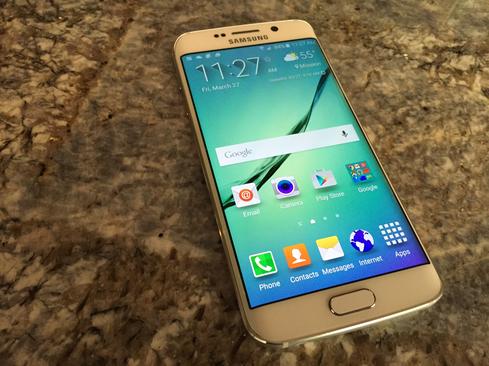Galaxy S6 Battery: Achilles Heel Or No Big Deal?
Many Samsung fans are furious the company sealed the battery deep inside the Galaxy S6. It doesn't help that the phone's battery life leaves something to be desired.

Samsung Galaxy S6 Edge: Night At The Museum
Samsung Galaxy S6 Edge: Night At The Museum (Click image for larger view and slideshow.)
Samsung stepped up its design game with the Galaxy S6 and S6 Edge. The South Korean company's flagship smartphones trade in cheap plastics for high-quality metal and glass. This decision didn't come without compromise, however, and Samsung was forced to seal the battery inside the phones' chassis in order to achieve its design goals.
Without a user-replaceable battery, many die-hard Samsung fans are howling in disapproval. What's behind their discontent?
The Apple iPhone was one of the first major smartphones to ship with an inaccessible battery. Every iPhone released since 2007 has been sealed up tight, leaving owners with no ability to swap out the power cell. Mike Lazaridis, co-CEO of BlackBerry when Apple introduced the original iPhone, skewered Apple for the decision and touted BlackBerries' removable batteries as a significant benefit.
Later, HTC followed suit. It, too, sealed the battery in place so it could achieve more appealing smartphone designs. HTC's One X, One M7, One M8, and One M9 all have inaccessible batteries. Google also moved to sealed designs with the Nexus 4, Nexus 5, and Nexus 6 smartphones.
Samsung steadfastly kept to designs with removable batteries. Every Galaxy S handset, from the 2010 original to the 2014 S5, has featured removable batteries. Like Lazaridis, Samsung's executives were sure to point out the benefits of this choice over sealed designs.
What are those benefits?
First, if your device locks up entirely (as 2007-era BlackBerries were wont to do) you could simply pull the battery to reboot it. Second, and more importantly, removable batteries allow users to swap in a spare if the main power cell runs dry. These arguments may have made sense in 2007 and maybe even 2010, but they no longer do in 2015.
If an iPhone locks up, a long press of both the power button and home button will reboot it. Most Android devices have similar reset functions. This reset feature has worked without fail for years, negating the first argument entirely.
As for the second, well, there's more than one way to look at it. Let's say you like the idea of carrying a spare battery just in case your device loses power. To do this, you had to buy the exact battery for your device. Nearly all smartphone batteries are different -- size, shape, capacity -- and they aren't interchangeable. Such spare batteries often cost $40 to $60. Then you had to have a way to charge the spare battery. Some companies sold charger cradles for spare batteries (again, at extra cost), but most didn't. This meant you had to charge one battery in the phone and then pull it out to charge the second.
Hardly convenient.
Over the last few years the consumer electronics industry has supported the idea of irreplaceable batteries by churning out portable battery packs. Prices for these packs range from $10 to $150 depending on capacity, number of ports, and charging speed. The flexibility and portability of third-party battery packs can't be overstated. Many offer enough capacity to fully recharge two or more smartphones. Some can recharge tablets and even laptops. The fact that they work with most battery-powered devices via standard USB ports and can be tossed easily into briefcases, backpacks, and purses makes them an ideal solution.
[Read about Galaxy S6 sales.]
The other big advancement to consider is QuickCharge technology. Many of today's flagship smartphones -- including the Galaxy S6 and S6 Edge -- support rapid battery charging. Samsung's marketing materials say the S6 and S6 Edge can suck up four hours' worth of battery life in just ten minutes of charging time. The phones can reach 75% capacity in about an hour.
Perhaps the loudest argument I've heard over the Galaxy S6 and S6 Edge battery has more to do with flexibility and the perceived notion of control over our own possessions. Some say sealed batteries simply aren't consumer friendly, and they do cost more to repair. Last, consumers are being asked to trade this flexibility and control for design, for a phone that might look better or be made from nicer materials. Is the trade a fair one?
In the case of the Galaxy S6, the compromise would be less painful if the battery life were better. The phone hardly lasts a day, which is the critical benchmark for all smartphones.
What do you think? Feel free to sound out in the comments below.
About the Author
You May Also Like







